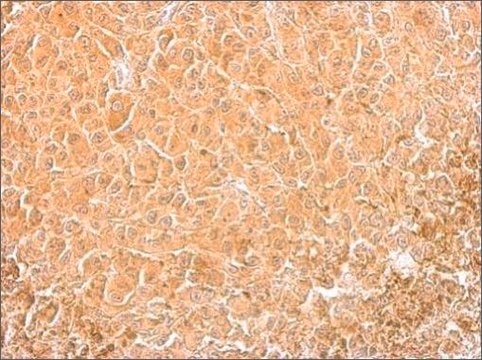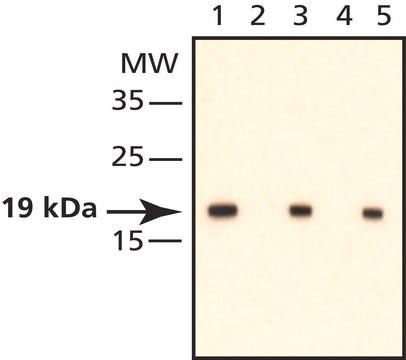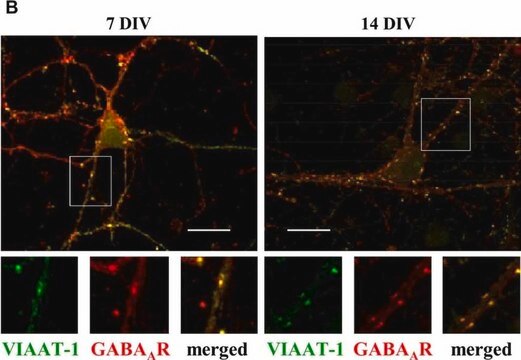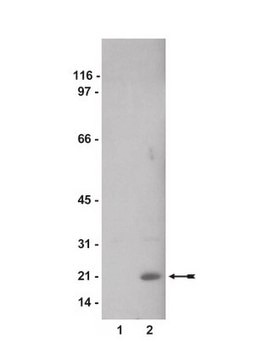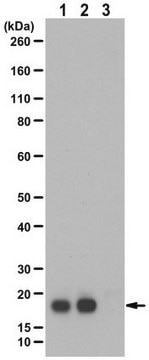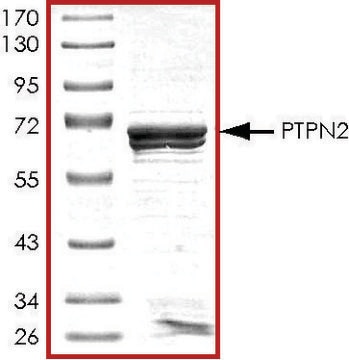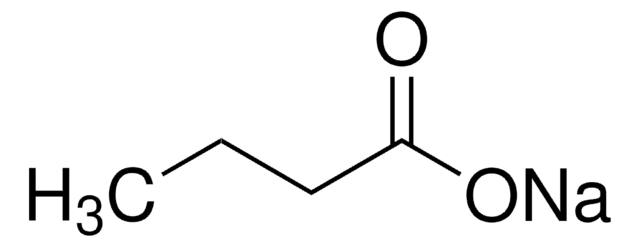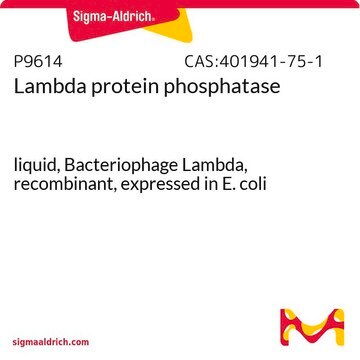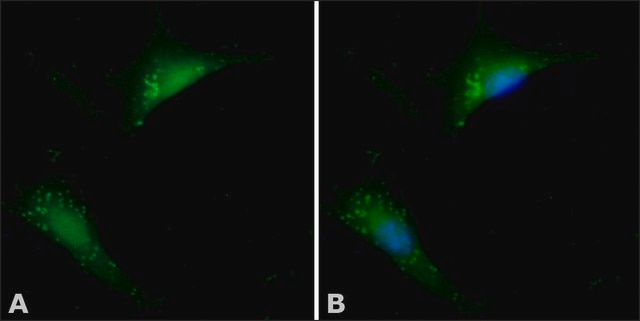General description
We are committed to bringing you greener alternative products, which adhere to one or more of The 12 Principles of Green Chemistry.This antibody is Preservative-free, produced without the harm or sacrifice of animals and exceptionally stable to allow for ambient shipping and storage if needed and thus aligns with "Waste Prevention", "Designing Safer Chemicals" and "Design for Energy Efficiency".
Click here for more information.
ZooMAb® antibodies represent an entirely new generation of recombinant monoclonal antibodies.Each ZooMAb® antibody is manufactured using our proprietary recombinant expression system, purified to homogeneity, and precisely dispensed to produce robust and highly reproducible lot-to-lot consistency. Only top-performing clones are released for use by researchers. Each antibody is validated for high specificity and affinity across multiple applications, including its most commonly used application. ZooMAb® antibodies are reliably available and ready to ship when you need them.
Specificity
Clone 1B13 is a ZooMAb® Rabbit recombinant monoclonal antibody that specifically detects Cofilin-1. It targets an epitope within 17 amino acids from the N-terminal region.
Immunogen
KLH-conjugated linear peptide corresponding to 17 amino acids from the N-terminal region of human Cofilin-1.
Application
Quality Control Testing
Evaluated by Western Blotting in MCF-7 cell lysate.
Western Blotting Analysis: A 1:1,000 dilution of this antibody detected Cofilin-1 in MCF-7 cell lysate.
Tested applications
Western Blotting Analysis: A 1:1,000 dilution from a representative lot detected Cofilin-1 in NIH3T3, PC12, and HEK293 cell lysates.
Affinity Binding Assay: A representative lot of this antibody bound Cofilin with a KD of 4.0 x 10-7 in an affinity binding assay.
Immunohistochemistry (Paraffin) Analysis: A 1:100 dilution from a representative lot detected Cofilin-1 in human tonsil tissue sections.
Note: Actual optimal working dilutions must be determined by end user as specimens, and experimental conditions may vary with the end user
Anti-Cofilin-1, clone 1C18 ZooMAb®, Cat. No. ZRB1559, is a recombinant Rabbit monoclonal antibody that specifically targets Cofilin-1 and is tested for use in Affinity Binding Assay, Immunohistochemistry (Paraffin), and Western Blotting.
Target description
Cofilin-1 (UniProt P23528; also known as 18 kDa phosphoprotein, Cofilin non-muscle isoform, p18) is encoded by the CFL1 (also known as CFL) gene (Gene ID 1072) in human. Cofilin-1 (non-muscle cofilin), cofilin-2 (muscle cofilin), and actin-depolymerizing factor (ADF) play an essential role in regulating actin filament dynamics and reorganization by stimulating the severance and depolymerization of actin filaments. The three cofilin family members share 70% to 81% sequence identity, exhibit similar biological functions, and display distinct but overlapping expression patterns. Cofilins and ADF bind actin monomers and filaments (G-actin and F-actin) and increase the number of actin monomers and filament fragments, facilitating filament turnover and treadmilling at key locations in migrating cells. Cofilins and ADF are inactivated by phosphorylation at serine 3 by LIM-kinases (LIMK) and testicular protein kinases (TESKs) and are reactivated by dephosphorylation by the slingshot (SSH) family of protein phosphatases and chronophin. Cofilin-1 is required for the centralization of the mitotic spindle and symmetric division of zygotes. It also plays a role in the regulation of cell morphology and cytoskeletal organization in epithelial cells and is shown to be essential for neural tube morphogenesis and neural tube cell migration. Cfl1-knockout mice display embryonic lethality at E11.5 - E12.5 due to aberrant neural tube closure and defective neural crest cell migration, while Adf-deficient mice are viable with normal brain appearance, but suffer from corneal defects that cause blindness in adult mice. This ZooMAb® recombinant monoclonal antibody, generated by our propriety technology, offers significantly enhanced specificity, affinity, reproducibility, and stability over conventional monoclonals.
Physical form
Purified recombinant rabbit monoclonal antibody IgG, lyophilized in PBS with 5% Trehalose, normal appearance a coarse or translucent resin. The PBS/trehalose components in the ZooMAb® formulation can have the appearance of a semi-solid (bead like gel) after lyophilization. This is a normal phenomenon. Please follow the recommended reconstitution procedure in the data sheet to dissolve the semi-solid, bead-like, gel-appearing material. The resulting antibody solution is completely stable and functional as proven by full functional testing. Contains no biocide or preservatives, such as azide, or any animal by-products. Larger pack sizes provided as multiples of 25 μL.
Reconstitution
30 μg/mL after reconstitution at 25 μL per vial. Please refer to guidance on suggested starting dilutions and/or titers per application and sample type.
Storage and Stability
Recommend storage of lyophilized product at 2-8°C; Before reconstitution, micro-centrifuge vials briefly to spin down material to bottom of the vial; Reconstitute each vial by adding 25 μL of filtered lab grade water or PBS; Reconstituted antibodies can be stored at 2-8°C, or -20°C for long term storage. Avoid repeated freeze-thaws.
Legal Information
ZooMAb is a registered trademark of Merck KGaA, Darmstadt, Germany
Disclaimer
Unless otherwise stated in our catalog or other company documentation accompanying the product(s), our products are intended for research use only and are not to be used for any other purpose, which includes but is not limited to, unauthorized commercial uses, in vitro diagnostic uses, ex vivo or in vivo therapeutic uses or any type of consumption or application to humans or animals.

